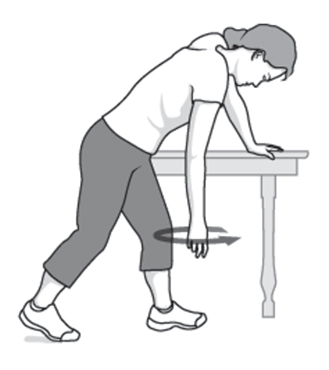Sometimes called as adhesive capsulitis of the shoulder ,is a condition where a shoulder become painful and stiff .shoulder movement become reduced sometimes completely” frozen”.
SYMPTOMS
The typical symptoms are pain ,stiffness and limitation in the range of movement of one of your shoulder .
Typically 3 phases-
1) phase one – THe’ freezing ‘ painful phase this typically last 2-9 month. The first symptom is usually pain stiffness and limitation in movement.
2) phase two – The “frozen” stiff or ( adhesive )phase – typically last 4- 12 month .pain gradually ease but stiffness and limitation in movement.The movement most severely affected is usually rotation of the arm outward .the muscles around the shoulder may waste a bit .as they are not used.
3) phase three – THE “THRAWING” recovery phase . Typically last between 1 and 3 year.the pain and stiffness gradually go. And movement gradually returns to normal or near normal.
CAUSES –
Connective tissue known as the shoulder capsules surrounds this joint synovial fluid enables the joint to move without friction.
Frozen shoulder is thought to happen when scar tissue forms in the shoulder .this causes the shoulder joint capsules to thicken and tighten , leaving less room for movement .movement may become stiff and painful.
DIAGNOSIS:
During the physical exam, your doctor may ask you to move in certain ways to check for pain and evaluate your range of motion (active range of motion). Your doctor might then ask you to relax your muscles while he or she moves your arm (passive range of motion). Frozen shoulder affects both active and passive range of motion.
In some cases, your doctor might inject your shoulder with a numbing medicine (anesthetic) to determine your passive and active range of motion.
Frozen shoulder can usually be diagnosed from signs and symptoms alone. But your doctor may suggest imaging tests — such as X-rays or an MRI — to rule out other problems.
Treatment
Approach Considerations
The goals of treatment for frozen shoulder syndrome (FSS) are to relieve pain and restore movement and shoulder function
Physiotherapy and home exercise are first-line treatments for all stages of FSS. Most patients are treated nonoperatively; more than 90% respond to conservative interventions to control pain and restore motion
Most frozen shoulder treatment involves controlling shoulder pain and preserving as much range of motion in the shoulder as possible.
PHYSIOTHERAPY:
A physical therapist can teach you range-of-motion exercises to help recover as much mobility in your shoulder as possible. Your commitment to doing these exercises is important to optimize recovery of your mobility.
7 stretching & strengthening exercises for a frozen shoulder
Frozen shoulder (also known as adhesive capsulitis) is a condition in which the shoulder is stiff, painful, and has limited motion in all directions.
Stretching exercises are usually the cornerstone of treating frozen shoulder.
Always warm up your shoulder before performing your exercises. The best way to do that is to take a warm shower or bath for 10 to 15 minutes. You can also use a moist heating pad or damp towel heated in the microwave, but it may not be as effective.

In performing the following exercises, stretch to the point of tension but not pain.
